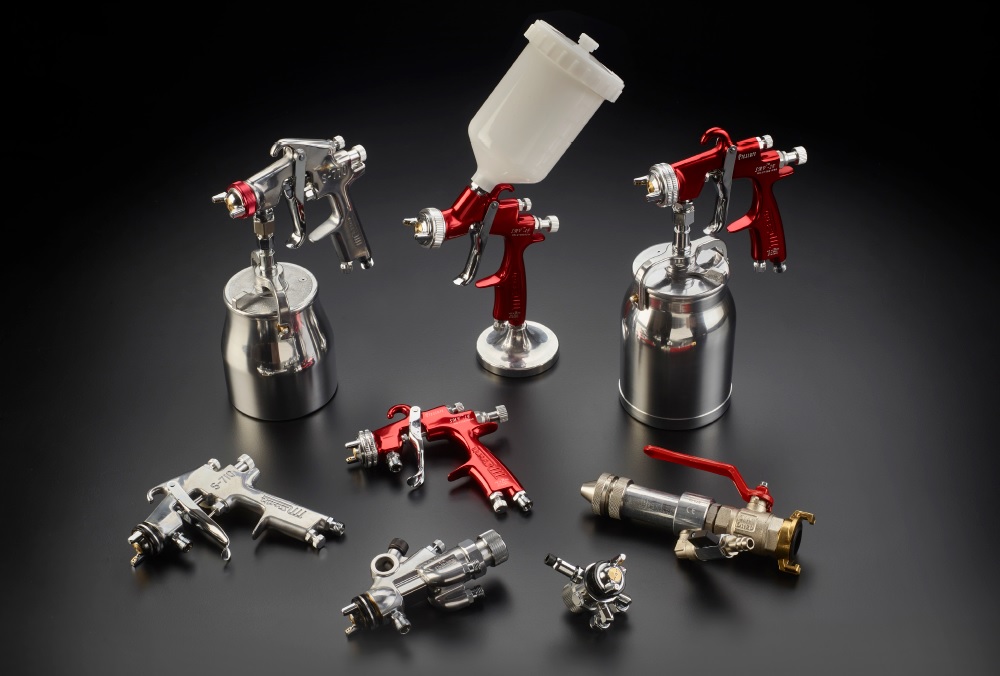CHOOSE THE RIGHT AIR SPRAY GUN
There is a wide range of paint spray technology to choose from. Depending on the desired finish quality, transfer efficiency, speed, type of paint being used, type of surface and coating technology that is chosen, it helps to understand the advantages/disadvantages and differences between each technology.

AIR SPRAY
Air spray is a low-pressure fluid stream that is mixed with compressed air at the aircap to atomize material. It’s used for the application of low to medium viscosity fluids for products requiring a high quality.
There are several different versions of air spray technologies including:
Conventional
Conventionsal the traditional form of air spray technology and delivers the highest finish quality and production speeds. To achieve these advantages, a lot of air is utilized, resulting in lowest transfer efficiency of all the air guns.
High Volume, Low Pressure (HVLP)
HVLP was developed for areas regulated by the U.S. Environmental Protection Agency. To meet EPA regulations, the amount of air used is limited to 10 psi at the aircap. The result is a low velocity pattern with good finish quality and higher transfer efficiency than conventional. A quality HVLP air gun should acheive around 75%+ transfer efficiency.
Compliant
Compliant technology, commonly referred to as Low Volume, Medium Pressure (LVMP), was developed to meet European standards. The requirement is the air pressure cannot exceed 29 psi at the air inlet and must acheive a transfer efficiency of 65%. This allows for an aircap design that delivers a high finish quality while achieving transfer efficiency equal to or better than HVLP.

Post comments
Leave A Reply
Your email address will not be published.